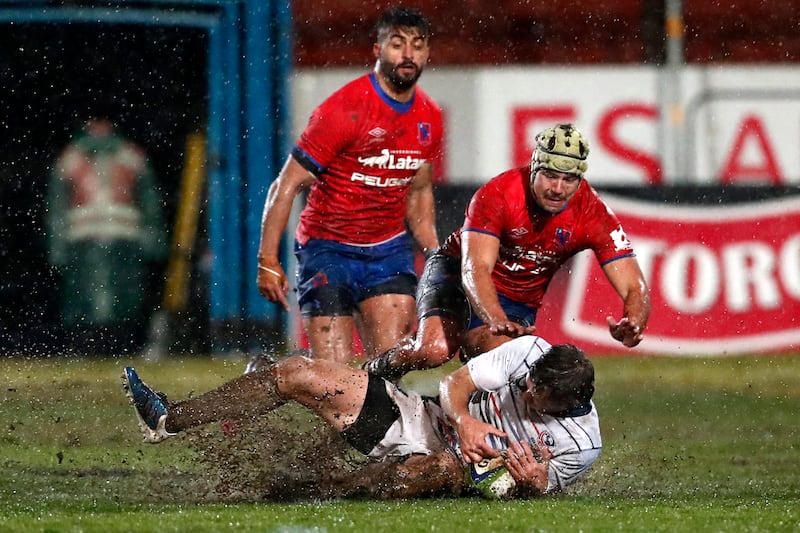In eight years’ time, we will all be preparing for the historic 2031 men’s Rugby World Cup. It will be the first in, as Bruce Springsteen so poetically labels it, “the Land of Hope and Dreams” - the United States of America.
Rugby has long hoped for success in America and dreamed of grabbing some of the ocean of money that is sloshing about in the giant USA sports market.
A dream that started 148 years ago when, in 1875, the first game of rugby was played in America between Harvard and McGill University from Montreal. For the next 31 years rugby dominated sport at the Ivy League universities and many other prestigious colleges across the states.
Sadly many of these games were not much less than violent wrestling matches. In 1906, after a series of deaths in these lawless events, an early example of what Americans now term “governmental overreach” was enacted when the then Republican president, Theodore “Teddy” Roosevelt, unwittingly began the destruction of USA rugby and the creation of American Football by demanding law changes, saying he would otherwise ban the sport.
The Counter Ruck: the rugby newsletter from The Irish Times
South Africa’s Jan-Henrik Wessels to miss Ireland game due to lengthy suspension
Clayton McMillan says Jack Crowley deserves to start for Ireland against New Zealand in Chicago
Gerry Thornley: Munster’s victory over Leinster may well prove to be a line in the sand
That year in New York City, 62 universities gathered to save the game of rugby and ended up burying it. In the first meeting of what would become the National Collegiate Athletics Association (NCAA), a series of law changes were made that would eventually lead to allowing one forward pass in each play. That forced the local mutation of rugby into what is now known as American football.
If not for Roosevelt’s intervention, rugby would have become America’s game and the USA would have been a rugby powerhouse, dominating global rugby history. The gargantuan financial beast that is the National Football League would have been a rugby competition.
After the USA men’s national team, the Eagles, won the last ever gold medal awarded at an Olympic Games - for the 15-a-side format in Paris in 1924 - the ravages of the Great Depression, followed by the decimation of what Americans call “their greatest generation”, who rid the world of fascism across both Europe and the Pacific, left rugby post the second World War America in small but passionate pools.
Across that time period USA’s rugby infrastructure was taken over by American football, so today there are only a handful of purpose-built rugby grounds across the country.
Rugby is nothing if not resilient and since the 1970s men’s rugby has made a resurgence. It is once again prospering in hundreds of universities across the States. With its inclusion as an official NCAA sport, women’s rugby has boomed in the universities. The USA has also won the rights to host the Women’s Rugby World Cup in 2033. Colleges across the USA are now offering scholarships to both men’s and women’s rugby players.
In the past, there have been many attempts to set up professional leagues in the States, but all failed. Then, in 2018, Major League Rugby (MLR) came into being. It is seemingly based on sound financial foundations, with each club as a separate franchise, utilising a salary cap to control financial expansion. While the wages and conditions for the players remain limited, at the end of their sixth season the MLR appears to be solid and it looks set to prosper.
With a massive amount of universities playing the game and a vibrant men’s professional league, we all expected that the USA Eagles would fly … but they remain firmly grounded.
Counterintuitively, it has been the national teams from South America who are prospering. Argentina, Chile and Uruguay have all qualified for this year’s World Cup, while both Canada and the USA have missed out.

While it is encouraging to see rugby booming in South America, having the Eagles missing out this year was not in World Rugby’s plans. So, next weekend the Eagles start their rebuilding programme with a European tour, playing Romania, Portugal and Georgia.
A major hindrance for the Eagles is that the MLR and USA Rugby are separate entities and a significant majority of the starting players in the MLR are foreign.
The majority of American players come to the game relatively late, making it difficult for them to master the skills and acquire the knowledge required for elite performance. With a plethora of other sports hoovering up athletic talent, sometimes it is the leftovers that are drawn to the welcoming community of the game of rugby.
Which is understandable because the hospitality, generosity of spirit and welcoming friendship that I have always experienced whenever I have had the pleasure to visit the States as either a player or a coach are overwhelming. Along its rocky history American rugby has maintained its deep spirit of community.
The greatest problem facing the Eagles’ long-term future is that the three major rugby organisations - USA Rugby, the MLR and the National College Rugby, which is the governing body of university rugby - far too often act as three separate silos with little connection to develop truly elite high-performance players.
Granting the USA the rights to host the men’s Rugby World Cup in 2031 was a brave, bold and forward-thinking action by World Rugby but that alone will not be enough to build the high-performance infrastructure required for sustained success in North America.
For the USA to become internationally competitive it will have to create a production line of players that flow from schools and clubs via the universities and then into an MLR dominated by locally produced talent.
With top-quality, technically excellent coaching along each step. Then the true elite can be selected for the Eagles.
While that is the mission, creating a well-coached, highly-skilled stream of American-born players is still some distance away.
World Rugby understands that the Eagles hold the key to unlocking the door to the Land of Hope and Dreams. Finding that key has taken far longer than anyone involved anticipated.
















